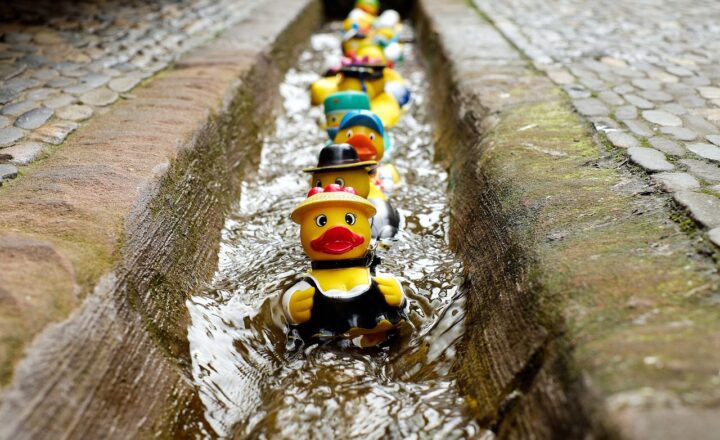Vintage Toys Gone Wrong: Strange Devices That Were Questionably Made for Kids
November 15, 2024

Toys have been a crucial part of childhood for centuries, allowing children to play, explore, and develop their imagination. Over the years, many toys have become iconic, celebrated for their creativity, educational value, and fun. However, not every toy that hit the market was a hit with kids and parents alike. Some vintage toys raised eyebrows, leading to concerns about safety, functionality, and common sense. In this article, we’ll dive into the bizarre world of toys that were questionably made for children and explore how they became infamous in the history of play.
1. The Cabbage Patch Snacktime Kid
In the 1990s, Cabbage Patch Kids were all the rage, and the Cabbage Patch Snacktime Kid aimed to take the phenomenon a step further. This toy came with a unique feature—its mouth would open and close while munching on the plastic food that came with it. While the concept may have seemed cute, children soon learned that the poor design led to hair and fingers getting caught in the mechanism, resulting in some painful experiences. As a result, the Snacktime Kid was quickly pulled from shelves, but not before creating a legacy that toy manufacturers would not soon forget.
The toy’s captivating, yet ultimately disturbing, design highlighted a crucial aspect that is often overlooked: the practical implications of a toy meant for young children. For instance, toys designed for imaginative play replaced with bite-sized dangers.
2. The Safety Baby Swing
It’s always been a parent’s mission to keep their kids safe, but some products have raised eyebrows in the safety department. One such item was the Safety Baby Swing, which promised a secure and fun experience for infants. However, the design did not include a proper harness system, leading kids to fall out while swinging. Many parents reported that this swing turned a relaxing experience into a hazard, as kids were flying out of swings at alarming rates. While it might’ve been marketed as safe, reality showed otherwise.
This completely undermines the toy’s main purpose, which should be to keep children secure while enjoying playtime. Instead, it resulted in numerous injuries, leading to its eventual discontinuation.
The Invisible Ink Book
Imagine the excitement of children as they received an Invisible Ink Book, which supposedly held the mysterious allure of hidden messages just waiting to be discovered. The catch? The invisible ink was commonly acid-based. While the concept was enticing, the imagination faded upon learning that the product included potentially hazardous chemicals. Although it was a fun and interactive idea, the laughter quickly faded when parents found out about the toxicity of the ink.
The Invisible Ink Book opened up discussions around regulations regarding children’s toys, illustrating just how careful manufacturers must be regarding the materials used in toys. The vintage toy is a cautionary tale for the industry that falls under scrutiny for neglecting safety standards.
The Jarts Lawn Darts
Lawn games are a staple of summer fun, but Jarts—weighted lawn darts—were not the lighthearted entertainment manufacturers intended. Instead of the traditional plastic tip, these large yard darts had metal points, making them dangerously sharp. The risk of impaling an unsuspecting child or pet led to many accidents, resulting in the eventual ban of Jarts in the US.
Despite their intended purpose of outdoor enjoyment, their design effectively turned the game into a weapon, leading to calls for stricter guidelines around toy design. The Jarts saga reshapes how lawn games are evaluated for safety, illustrating that even toys meant for outdoor fun can carry hidden risks.
The Baby Walk-Along Monkey
This adorable plush monkey was marketed as a great companion for newly walking infants. However, it came with an unfortunate design flaw—the eyes were made of small plastic pieces that could come loose. Several reports surfaced about children choking on these tiny parts, drawing significant concern from parents and the public alike. In its push for cuteness, the Baby Walk-Along Monkey ignored a fundamental principle: the importance of secure materials in toys designed for small children.
The unfortunate history of this plush character serves as a reminder of the delicate balance toy makers must strive for between allure and safety.
The Creepy Crawlers Bug Maker
The Creepy Crawlers Bug Maker allowed kids to create gelatin insect shapes at home. While it drew in curious children with its DIY charm, the device required a heating element that grew extremely hot during the cooking process. Many children ended up burned, leading to significant cautioning from safety advocates. While the concept was creative, it ultimately proved dangerous due to heat exposure. Companies eventually created safer alternatives, illustrating the consequences of combining creativity with irresponsible design.
This unfortunate creation serves as a lesson to toy makers about the necessary safety precautions needed when designing kids’ craft products.
Conclusion
Toys hold the power to enhance childhood experiences, promote creativity, and stimulate learning. However, with that power comes responsibility, and manufacturers must prioritize safety and usability. The vintage toys we’ve traversed through have left a mark on the toy industry, shaping regulations and igniting conversations about the importance of child-friendly designs.
Remembering these strange devices helps us value the advancements we’ve made in the industry and underscores the need for ongoing vigilance in ensuring that children enjoy safe and enriching playtime experiences. As we continue to celebrate the joy of play, let’s remain aware of the lessons learned from these vintage oddities and advocate for safer toys for the next generation of curious minds.








